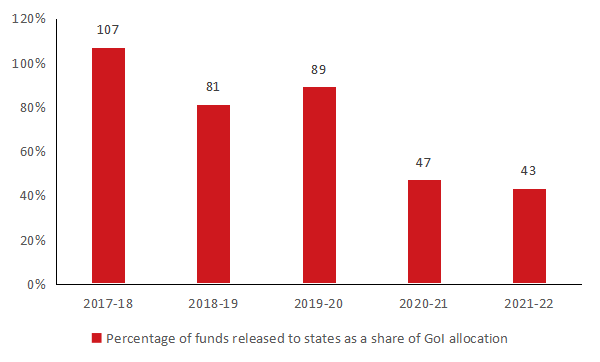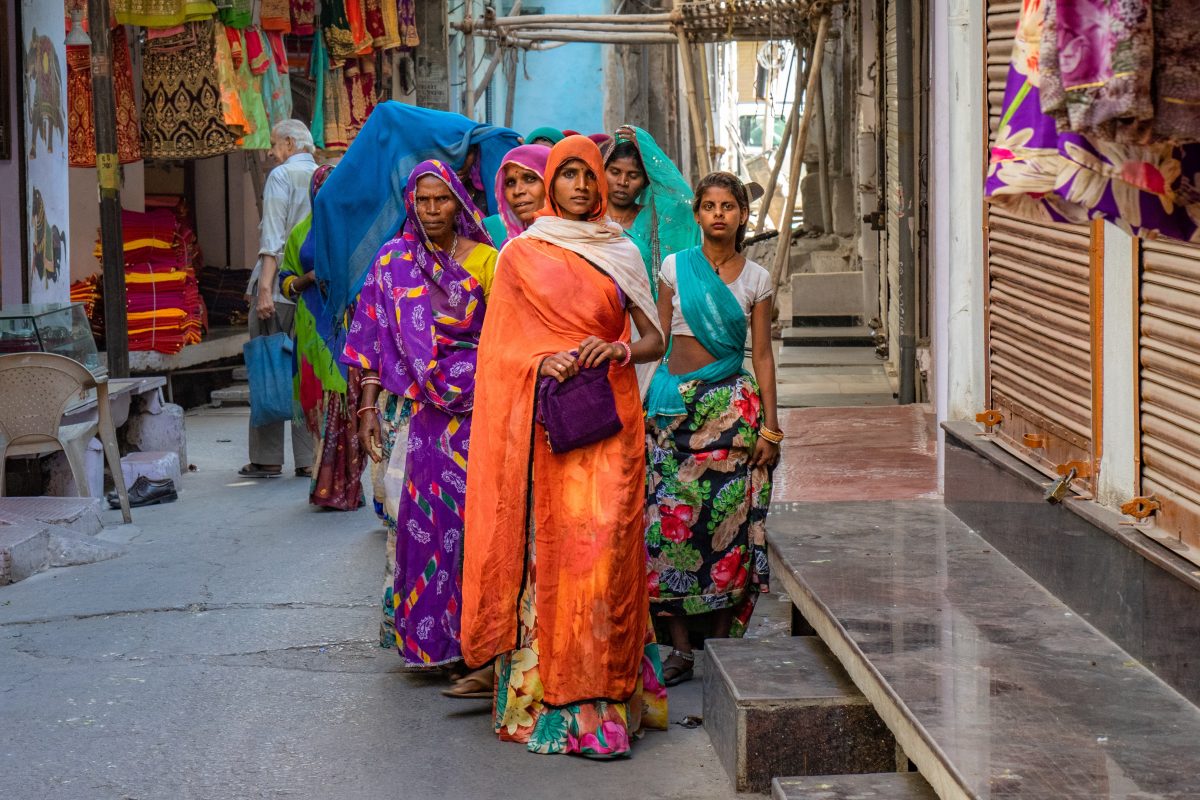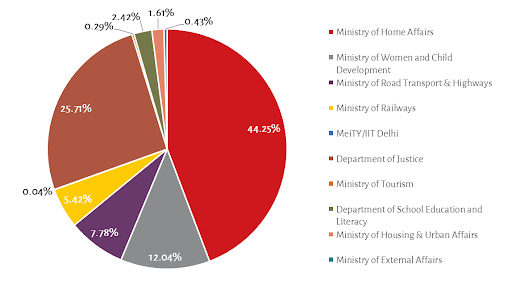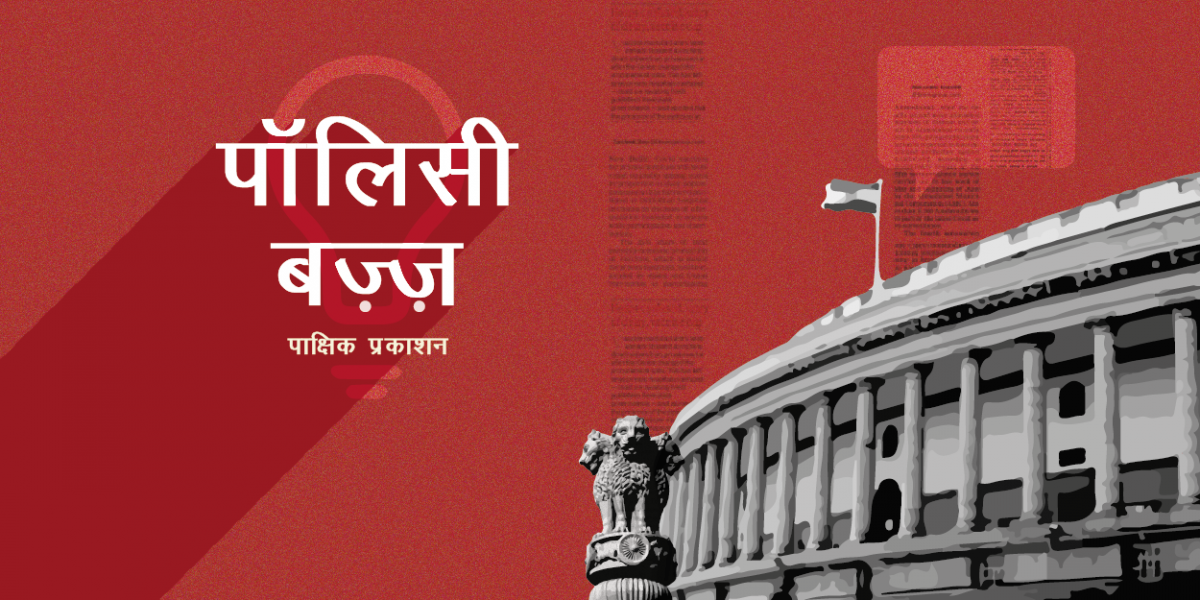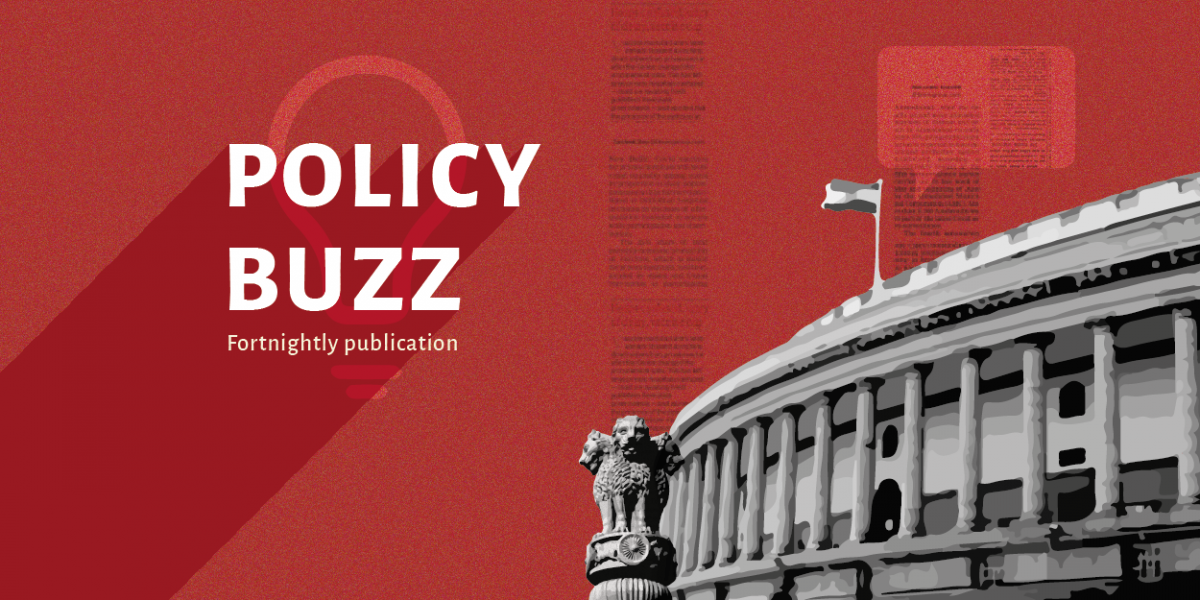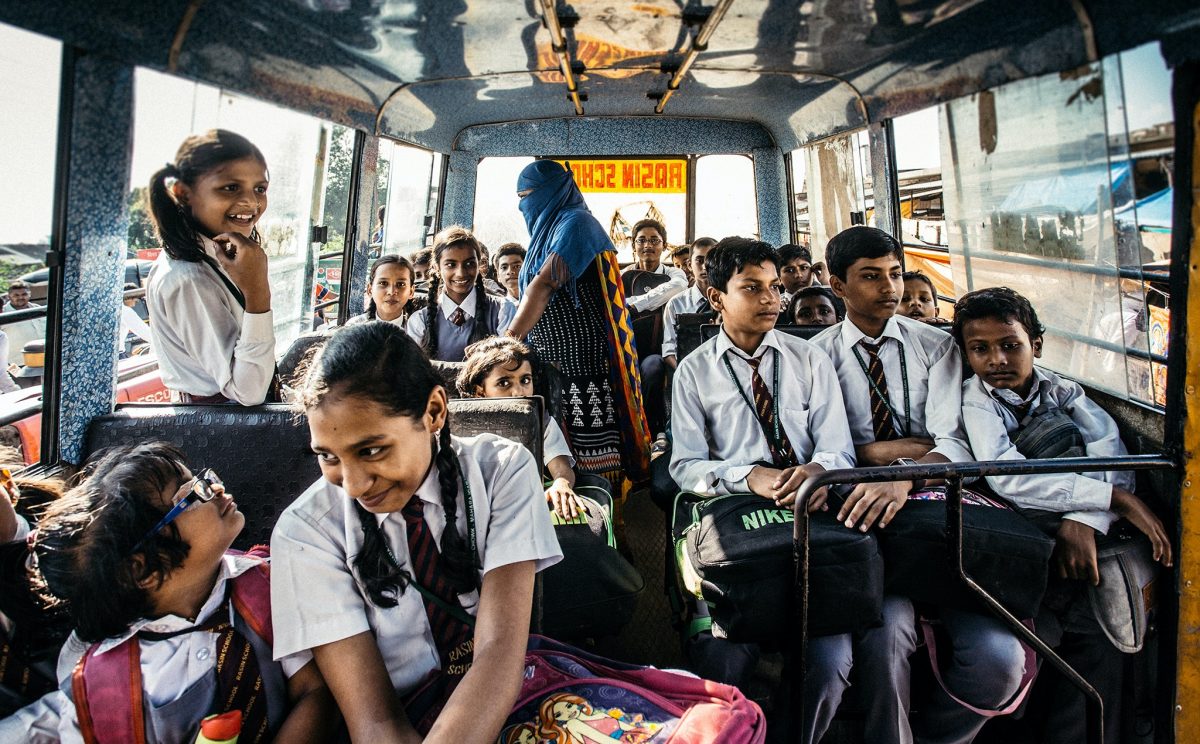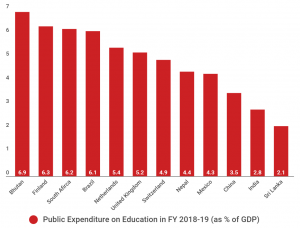The Cutting Edge is an exclusive series by the Accountability Initiative featuring insights from world-renowned scholars, and ideas that can spur innovation.
Navroz K. Dubash is a Professor at the Centre for Policy Research, where he conducts research and writes on climate change, energy, air pollution, water policy, and the politics of regulation in the developing world. He recently co-authored the newly released IPCC report on the mitigation of climate change. In the interview below, he discusses various aspects of India’s federal structure and climate action, as well as policymaking.
Q. At the COP26, India made several announcements on decarbonising and amping up renewable energy. For promises to be kept and targets to be met, the country’s administrative structure will play a key role in facilitating action.
On streamlining governance for climate change response, you and other scholars part of your team have proposed that the lens of India’s federal structure can be of use — or ‘structured opportunism’. A major reason is that, even as the Union government has more bureaucratic and financial capacities, the quality of climate change mitigation and adaptation measures will depend on how the states respond.
What is structured opportunism and what potential can it unlock?
Navroz Dubash: The broader context within which India has operated on climate change has been opportunistic, but in a way that is somewhat ad hoc at the national level, as well as at the state level. So where we see an opening in renewable energy, for example, there isn’t a way in which we are deliberately seeking those opportunities. We’re not out there trying to find ways of maximising the opportunities, identifying them, and looking to scale them up. And so when we use the shorthand of structured opportunism, we’re basically saying the time has come really for India to try and engage in climate action in ways that are backed by incentives in state capacity that make it more likely for us to be able to realise those opportunities.
Q. What do you think would need to change in India’s current federal structure to be able to do so?
Navroz Dubash: There are at least three sets of things that we really need to be thinking about. The first and probably the most important is the fact that there simply isn’t enough capacity in Indian states to take the climate problem seriously. And climate change is in some ways a problem that cuts across sectors, that cuts across states, and that requires enormous coordination.
So, for example, we’re seeing all stresses in agriculture, we’re seeing stresses in our cities, we’re going to see more flooding, we’re going to see an acceleration of what is called the ‘heat island effect’, where urban centres tend to be hotter than areas around. So to address all of these kinds of things, you can’t just have an urban development ministry or an environment department or an agriculture department. It really has to be interactive work across all of these. Now, where in the government, whether at the Union level and certainly even more so at the state level, is this coordination really happening?
So for this, you really need to have both a coordination mechanism at the state level, as well as nodes within individual departments, the job of which is to actually coordinate across departments. The shorthand we try to use is that we need to build a ‘climate-ready state’. And we really don’t have that. And to be fair, this is not just in India, we don’t have governance structures that are scaled up for the purpose of the kind of coordinated effort and the kind of joined-up government that is required for climate change anywhere in the world, really.
At minimum, we need to have nodes within government and more deliberate and explicit links with non-state actors, with civil society, with researchers in local universities that can do research on local conditions, and so on and so forth. [Setting up] state capacity in ways that are suitable to address the climate crisis, I think, is one big change we need to make.
The second is that states aren’t isolated in this either, right? There are many states that share common problems. You have coastal zone states that need to share fisheries, for example. So we need to have coordination across states. Should every state be trying to figure out challenges for itself? Here’s where I think the centre can step in, right? We need the knowledge economy around climate change to really be constructed by the centre in ways that can be tailored to and made appropriate for states.
And finally, we have to have clear and predictable sources of finance that are tied to these kinds of systemic structural changes that we’re looking at to address climate change.
We have to have clear and predictable sources of finance that are tied to these kinds of systemic structural changes that we’re looking at to address climate change.
Q. How prepared are different levels of government – from the Union to the states, and right down to the district level – on implementation for climate change action given the specialised nature of the problem?
Navroz Dubash: In the knowledge economy, we’re particularly far behind where we need to be. We don’t have a mechanism to harness knowledge even at the central level, let alone to disperse it in suitable ways to the states, because it can’t just be blunt, aggregate information. We do have, in the Indian Institute of Tropical Meteorology, an interesting and capable body that is looking at the science around climate change. They are trying to get knowledge out to have what are called ‘downscaled impacts’. So impacts at the level of, you know, geographic grids that map approximately two districts or even talukas, which is ultimately what information states need to have to adapt. But we don’t have a mechanism yet at the centre that pulls all that together.
Now, in another piece of work, my colleagues and I have written that India needs to think about a Low Carbon Development Commission, which also looks at questions of adaptation. And the reason we use the term as opposed to climate change commission is that other countries that have created climate change commissions tend to be focussed more on the challenge of mitigation or emissions reduction, built around climate targets or carbon targets.
In India, those targets are going to be very hard to set. And they’re going to be even harder to devolve to the states. And so, in India, the nature of the climate challenge is different. Rather than trying to reduce emissions – because our emissions are still growing – we need to avoid emissions, we need to slow down the rate of growth of our emissions. And so the nature of that challenge is very different. How do we develop while avoiding emissions? How do we squeeze the most development out of every tonne of carbon? We don’t know the answer to that question very well.
I think a big concern in India is how are we going to find jobs for our growing population? We have this demographic dividend that could turn into a millstone if we can’t create jobs. So what are the strategic opportunities in the future? What are the sunrise sectors in the current balance the government uses? So one of the things that the government is increasingly talking about is building a hydrogen economy. Now that’s relatively far off into the future, but also building an economy for the production of battery technology to enable the renewable energy transition. These are not simple things. They require an ecosystem of innovation.
Right now we have our energy system focused on the coal belt. That’s not where, for example, you get the maximum sunshine or wind speed. So it’s likely that the central gravity of our energy system will shift geographically. What happens to those coal belt regions? How do they transform and what are the livelihood opportunities in those regions? These are big, strategic questions that we have to think about.
What’s interesting about climate change is that the urgency of climate change and the political heft that it has as an environmental problem, it tends to get more political attention than other environmental problems with the possible exception of air pollution. It can open the door to these kinds of structural and systemic conversations. But in order to do that, we have to be prepared to have the conversation at that systemic level, and not just to have kind of band-aid solutions. So this is again, something where the centre can play an important role. But clearly, it cannot do it in ways where it dictates outcomes to states.
Q. Okay, and we can’t help but ask, what’s the role of decentralisation in all of this? Are there enough incentives that can be induced now, when policies are being planned for better adaptation strategies?
Navroz Dubash: So it’s very interesting that in the climate debate, adaptation conversations, mitigation conversations tend to be more in the direction of centralising decisions and the role of the local is to just implement these. Interestingly, the adaptation side – which is ‘how do you adapt to changing circumstances’ – in its very nature favours a decentralised approach because the idea of adapting is tailoring to the local.
But what’s interesting is, in climate conversations, there’s a growing tendency, even on the mitigation side, to move to (and I’m going to introduce a sort of a big word here) — polycentric governance. So the idea of polycentricity is as the word implies — rather than thinking about this as one big giant collective action problem, it’s better to think about it as a series of development choices made for local reasons, that also bring about reduced emissions.
So, if you’re in a city, you not might not be motivated by climate change, you’re motivated by livable cities, by public transport, by walking and bike lanes. Well, those things all give you an improved mitigation outcome as well, they reduce your emissions. And so the argument of polycentric governance is that we should let a thousand flowers bloom, have a lot of experimentation, and find ways to create more livable environments and environments that meet local needs, while also addressing climate change.
On both sides the conversation is increasingly moving to the fact that you have to have a lot of local control and local initiative. And in fact, the argument for states to be empowered to experiment with climate governance comes out of this.
Let me just make an observation here. Indian states were asked almost a decade ago to do state action plans. And we’ve written about this in the past, in some ways, it was a missed opportunity. So the title of the report we wrote was, ‘it’s a door opener to a conversation’ because states did in fact create working groups. A lot of times these were kind of dominated by consultants, unfortunately, so they did not bring in the local knowledge. Bureaucrats were overstrained and so they just pulled ideas off the shelf. But you did see cases where some states used the opportunity to experiment with local solutions that were tailored to their own context.
For example, one of the initiatives in the state action plan was to really look at rethinking how Sikkim used water, which is a very important part of their story and tied to the larger emphasis on organic agriculture. Himachal Pradesh tried to reconfigure itself as a kind of a green growth state. In Odisha, they spent a lot of time thinking about the coal economy and thermal power plants and the problem of fly ash.
So climate change started getting viewed through local lenses, even back then with the state action plans, and states are now doing another round of these plans which offers a further opportunity. But again, the capacity issue is a substantial constraint. In the sense, if you’re not going to take a cookie-cutter approach, and try to make things locally salient, you really need to have the time and the capacity of people to make that translation. And very importantly, you need the time to formulate these plans, as well as processes that bring in local communities that bring in local academics that bring in bureaucrats from other ministries that bring in business. You have to both have the time and an open process in order to realise the promise of a decentralised approach to climate change.
Q. Sikkim paved the way for it when they looked at using MGNREGS to construct more climate-related resources. And these are all public assets. Do you think now states can also go forward beyond that and ask for better inter-state coordination?
Navroz Dubash: There’s an interesting dimension to this, which is that India has argued internationally that what we need is a lot more climate finance. And we’ve even argued at a forum called the Clean Green Climate Fund for some form of direct finance, that says, let’s not make this a project-by-project approach, but a systematic programmatic approach. When we argued for this, we won that battle. But then we didn’t actually create systematic programmes! If you build a programme of work around and then take it to the international community for financing, you’re much more likely to actually get the sort of large scale systemic financing that isn’t dependent on project approvals.
I think there’s enormous scope for groups of states together to look at transformative approaches that will help climate-proof. I think it’s definitely something that we should be thinking about doing.
Q. Reformatory strategies to pivot the administrative system and make it more responsive to climate action will require fiscal incentives. This is something you’ve specified in the report as well. You’ve mentioned that India is locked into a “high carbon economy through our fiscal structures and our expenditure systems”. This year’s Union budget pays a strong focus on climate action as well.
So, what are these physical structures and expenditure systems that incentivise a high carbon economy, and does the budget pave the way for breaking free from these structures?
Navroz Dubash: My understanding is that when it comes to fiscal allocation, there isn’t a systemic or systematic way for the Finance Ministry to look at whether particular expenditures move us in the direction of low carbon and resilient economies or in the opposite direction. Through the Finance Commission structure, we do have this interesting trend where certain funds are set aside on an incentive basis, for example, around expenditure for air pollution, around expenditure for forest preservation, and so on. So that’s the kind of an incentive-linked approach, but it is a very small portion of the funds.
But in the mainstream budget process, we really don’t see this happening. You have processes whereby line departments really kind of come up with budget requests, and that can then get filtered through a set of criteria within the Finance Ministry. But when it comes to things like, for example, Gati Shakti (the infrastructure stimulus package) that’s going to be a very big amount of money that is spent to build up infrastructure in part as a jobs stimulus. Has anybody asked the question of whether the expenditures on infrastructure will move us in a low carbon or more climate-resilient direction or not?
We don’t have mechanisms to ask the question right now, similarly, with stimulus packages in India. They didn’t do a great deal to actually move in the direction of a low carbon future. I mean, one of the things that actually consistently has had the potential are MGNREGS expenditures, right, they could use MGNREGS money to build more climate-resilient resources in rural areas. But, for example, stimulating coal investments doesn’t necessarily do that.
We need to now have a set of filters and a set of questions that get asked systematically to deal with procedural hurdles in the sense that allow us to at least gather information about which expenditures will move us in the direction we want to travel, and which expenditures potentially move us away.
Q. What can readers look for in the latest IPCC report in Chapter 13 that you’ve authored regarding these points?
Navroz Dubash: For those of you who may not be aware, IPCC is an intergovernmental panel on climate change that undertakes a passive process where you review and analyse literature over 6 to 7 years and you try to synthesise what is relevant for governments. Our mantra is to be policy relevant and not policy prescriptive which is often a hard line [to live by] but we try and aspire to it.
Now a couple of things that the report said — one is that the sub-national level is very important for at least two reasons and this comes back to your question on decentralisation. It is at the sub-national level where experimentation can occur. So if you decide on one approach at the national level and get it wrong, the costs are pretty high. But if you allow sub-national experimentation, the mechanisms of learning across jurisdiction are more likely to be an adaptive form of climate governance. Even if you have some dead ends, you can reverse back and follow the process another city or region followed. This experimentation is very important.
The sub-national level is very important for at least two reasons and this comes back to your question on decentralisation. It is at the sub-national level where experimentation can occur.
Lots of things that are pertinent to climate change are actually not under the Union jurisdiction based on our system of ‘lists’ in the Constitution. So agriculture, urban development, water, even power are actually on the Concurrent list. Many of these things have to involve states. So even if you try to involve the Union to control, you are not going to get very far.
The second lesson is that the capacity of the Union needs to remain very thin and you need to devolve authority, but it needs to be supplemented with growing capacities.
The third learning is that, increasingly, the realm of policymaking isn’t about choosing one or the other policy solution. So 15 years ago when you spoke about climate policy, the literature was all about climate taxes or ‘cap and trade’ systems, but now the literature says ‘listen, the game really is how to have just and sustainable transitions from high carbon to low carbon systems and from low resilient to high resilient systems’. To do that you need to work on a package of solutions. While this does not speak to the federal structure, it speaks to the capacity of complex policymaking. How can you think of an economic policy with innovation and redistribution? This needs to be put together in ways that reinforce each other.
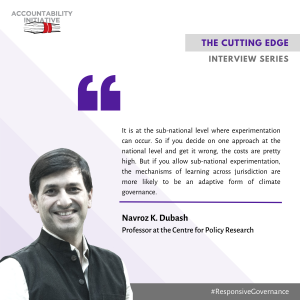
This interview has been edited for length.
Also Read: Did India’s Ecological Fiscal Transfers Incentivize State Governments to Increase their Forestry Budgets?
